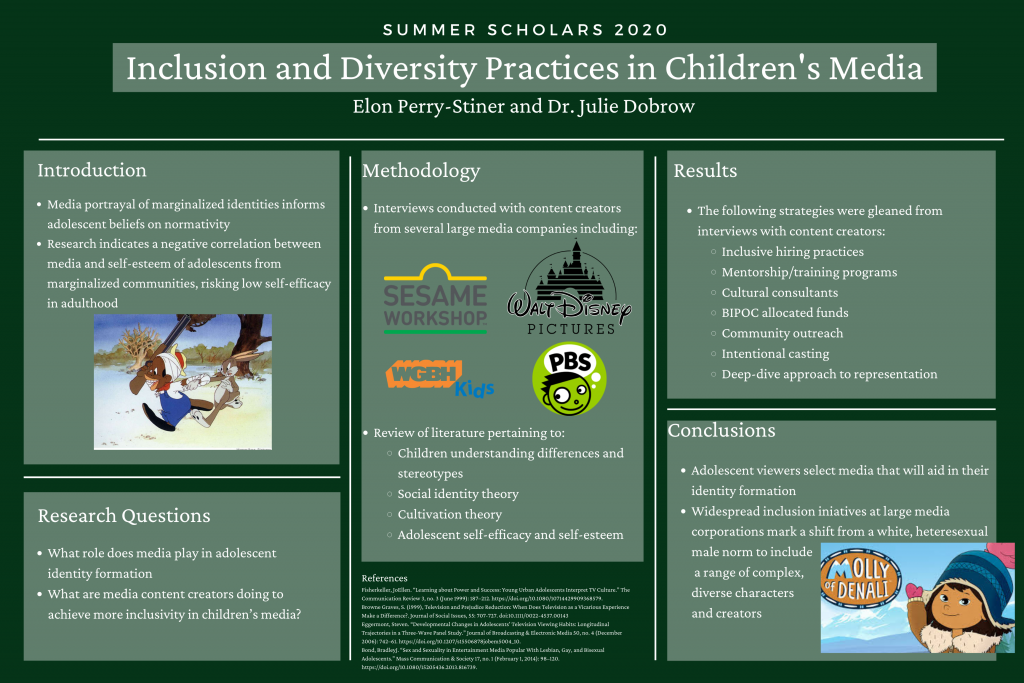Inclusion and Diversity Practices in Children’s Media
by Elon Perry-Steiner
Mentor: Julie Dobrow, Child Study and Human Development; Nancy Gurwitz Sambul Summer Scholars Fund

This project addresses the gap in research pertaining to the effects of stereotypes and erasure in mainstream media on adolescent development, particularly on identity formation. Historically, children’s media has been exclusive of marginalized identities, and when they are shown, portrayal is often rife with harmful stereotypes. Research indicates that adolescents register media as a tool to form their identity with (Eggermont, 2006), and stereotypes in media perpetuate social inequality that inform behavior toward one’s self and others (Gerbner, 1975). In consideration of this, callous representations of any identity that is not a white, heterosexual
male one can evoke feelings of shame and hatred (Fisherkeller, 1999). This is especially detrimental to adolescents who receive their first exposure to a given identity through media (Bond, 2014).
In light of the widespread racial reckoning in conversation today, content creators are more conscious than ever about representation and inclusion. Efforts to include diverse identities in both mainstream media content and production are more prevalent today as a result of calls to action by viewers who have become disenchanted with the white hegemony that coheres mainstream media production. Content like WGBH and PBSKids’ Molly of Denali (2019-) has ushered in a new era of authentic storytelling. Molly is the first Indigenous lead in children’s media, and the program presents culturally specific storylines in a universal way. Their use of Alaskan Native cultural consultants and mentorship/training programs characterizes a new method of production — one that promotes diversity both on and off screen. Interviews with content creators from other media companies revealed similar steps toward inclusion. The creators reflected on their conscious efforts to hire more creatives of color, fund BIPOC projects, and cast with intention among other strategies. This shift marks a crucial turning point for the future of media production and the social implications related to increased visibility of marginalized identities.
Hi Elon! This is fascinating and inspiring work – Your findings about the importance of diversity and inclusion, not just on screen, but also behind the scenes, really resonated with me. Can’t wait to see what you do next!
Really important work! I think that the methodology of interviewing the people actually creating the content for children’s media is a unique approach. Your research presents an important angle and highlights that children themselves make choices in what media they consume! Great project!
This is such a great project, and hearing what content creators from such influential companies had to say individually about this is so interesting! I like that you included how children’s media has failed in representing marginalized identities as well as ways that the media can & should do better in the future.